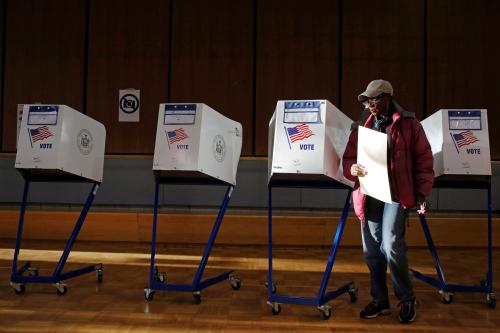After elections in Texas and Illinois, the 2018 primaries are officially off and running. Together these races will shape the 2018 midterms and the next Congress. To help you follow along with all of the campaigns and developments, the Center for Effective Public Management at Brookings established The Primaries Project where a team of researchers examine who runs, votes, and wins in these contests.
Below, we highlight some of the charts and graphs from their research thus far.
REPUBLICAN INCUMBENTS FACE MORE COMPETITION THAN THEIR DEMOCRATIC COUNTERPARTS
Before the first primaries began, Elaine Kamarck, founding director of the Center for Effective Public Management, and Alexander Podkul provided a “lay of the land” for the upcoming races. As the chart below suggests, Republican incumbents are likely to face more competition than their Democratic counterparts. According to Kamarck and Podkul, the competition comes both from more Republican incumbents being primaried by well-funded opponents of their own party and more competitive Democratic primaries in Republican-held districts than competitive Republican primaries in Democrat-held districts.
WOMEN RAN AND WON IN TEXAS
According to Kamarck and Podkul, not only did a record number of women run in the Texas primaries, the first contests of the year, but a record number won or advanced to a runoff election, too. They write that “compared to 2014, women more than tripled as a share of all primary winners (or runoff contenders).”
Kamarck and Podkul note however that there was no evidence of a female surge in the Illinois primaries held on March 20.
NO CONGRESSIONAL CANDIDATES IN ILLINOIS IDENTIFIED WITH THE TEA PARTY
As part of their analysis, Kamarck and Podkul also examine how candidates identify themselves within their parties. They found that in Illinois, the number of candidates identifying as business or establishment Republicans was down as the number of conservatives was up, and the number of candidates identifying with the Tea Party had disappeared.
Scholars from the Governance Studies program will continue their analysis of the primaries and 2018 midterms throughout the year. Follow along at The Primaries Project, and be sure to subscribe to weekly updates from Governance Studies via email.




Commentary
Charts of the week: On the 2018 primaries
March 23, 2018